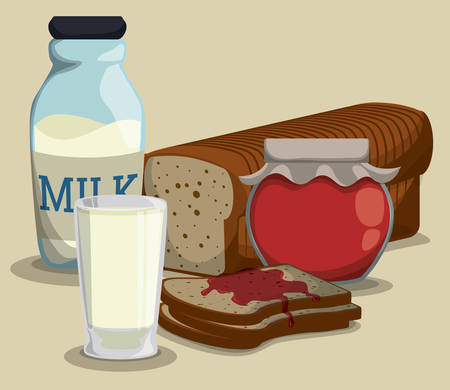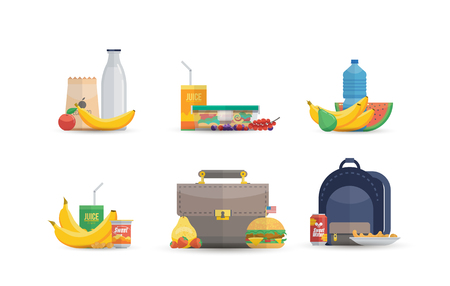Fueling for the Climb: Why Nutrition Matters in the Great Outdoors
Hiking up a steep trail or tackling a rocky summit takes more than just strong legs and a spirit of adventure—it requires smart nutrition. When you’re out exploring America’s national parks or scaling local peaks, what you eat directly impacts your energy, endurance, and how quickly you bounce back for your next adventure.
The Role of Nutrition in Outdoor Activities
Your body is like a high-performance engine on the trail. The right foods can help keep your energy steady, muscles strong, and mind sharp when you need it most. Here’s why:
- Energy: Carbs give quick fuel for those intense uphill pushes.
- Endurance: Healthy fats and proteins sustain you during long days outside.
- Recovery: Key vitamins and minerals support muscle repair after tough climbs.
How Poor Nutrition Impacts Your Adventure
If you don’t fuel up properly, you might hit the wall—feeling sluggish, lightheaded, or even risking injury. The right snacks and meals can make the difference between reaching the summit with a smile or struggling to finish the day.
Quick Comparison: Outdoor Nutrition Needs vs. Everyday Eating
| Everyday Eating | Outdoor Adventure | |
|---|---|---|
| Main Focus | Balanced diet for overall health | High energy, portable nutrients |
| Carb Intake | Moderate | Higher (for quick fuel) |
| Protein & Fat | Regular portions | Slightly increased (for sustained energy) |
| Sodium & Electrolytes | Lower concern | Higher need (due to sweat loss) |
| Hydration | Adequate water intake | Cautious hydration planning required |
Nutritional Challenges in the Wild
- No refrigerators: Foods need to be shelf-stable and easy to pack.
- Limited cooking: Simple meals and snacks are key.
- Weight matters: Every ounce counts when you’re carrying your own supplies.
The Takeaway: Be Prepared!
Packing superfoods that deliver big nutrition in small packages is a game changer for outdoor enthusiasts. In the next sections, we’ll dive into which foods make the cut and how to use them to fuel your summit success.
2. Superfoods 101: What Makes a Food ‘Super’ for Outdoor Adventures
When youre hitting the trails, every ounce in your pack and every bite you eat matters. That’s where superfoods come in. But what exactly makes a food “super” for outdoor adventures like hiking, backpacking, and mountaineering?
What is a Superfood?
Superfoods are nutrient-rich foods that offer big benefits in small packages. Theyre packed with vitamins, minerals, antioxidants, healthy fats, and sometimes protein. For outdoor enthusiasts, this means more energy, faster recovery, and better overall performance—without weighing down your backpack.
Key Characteristics of Superfoods for the Trail
| Characteristic | Why It Matters on the Trail |
|---|---|
| High Nutrient Density | Packs lots of nutrition into small servings—important when space and weight are limited. |
| Lightweight & Portable | Easy to carry and doesn’t spoil quickly; ideal for multi-day trips. |
| Energy-Boosting | Provides sustained energy from complex carbs, healthy fats, or protein. |
| Antioxidant Rich | Helps fight inflammation and supports immune health during physical exertion. |
| Quick Recovery Support | Aids muscle repair and reduces soreness after long hikes or climbs. |
Benefits for Hikers, Backpackers, and Mountaineers
- Hikers: Superfoods help maintain steady energy levels for day-long treks, keeping you fueled without feeling weighed down.
- Backpackers: When every ounce counts, nutrient-dense foods ensure you get maximum nutrition with minimum weight—perfect for multi-day journeys.
- Mountaineers: At high altitudes where appetite can drop but calorie needs soar, superfoods deliver essential nutrients to keep your body performing at its best.
The Takeaway: Choose Smart Fuel
If you want to go farther and feel better on your next adventure, look for foods that check these boxes: high in nutrients, lightweight, easy to eat on the go, and packed with the kind of fuel your body needs most. In the next section, we’ll dive into specific superfoods that stand out for summit seekers.

3. Top Trail-Ready Superfoods: Packing Power and Portability
When you’re heading into the wild, your food choices matter. You need lightweight, long-lasting snacks that give you energy without weighing down your pack. In the U.S., outdoor enthusiasts have found some go-to superfoods that check all the boxes for nutrition, portability, and taste. Here are some top picks that deserve a spot in every hiker’s backpack:
Nuts and Seeds: Tiny Packages, Big Energy
Nuts like almonds, walnuts, and cashews are classic trail snacks because they’re packed with healthy fats, protein, and fiber. Seeds—think pumpkin or sunflower—are just as powerful. They don’t spoil easily and keep you fueled for hours.
Popular Choices:
| Superfood | Main Nutrients | Why Its Great for the Trail |
|---|---|---|
| Almonds | Protein, Vitamin E, Healthy Fats | Boosts energy and supports muscle repair |
| Pumpkin Seeds | Magnesium, Zinc, Protein | Helps muscle function and keeps you full |
| Walnuts | Omega-3 Fats, Antioxidants | Supports brain health and fights inflammation |
Dried Fruits: Sweet Energy Bursts
Dried fruits like cranberries, apricots, and dates are staples for many American hikers. They deliver quick carbs for a fast energy boost and are rich in vitamins and minerals. Just watch out for added sugars—choose unsweetened options when possible.
Trail Favorites:
- Cranberries: High in antioxidants; tart flavor helps refresh your palate on long hikes.
- Apricots: Loaded with vitamin A and potassium to help prevent cramps.
- Dates: Super sweet and high in fiber; great for a quick pick-me-up.
Jerky: The Protein Powerhouse
If you want something savory with serious staying power, jerky is hard to beat. Beef jerky is popular across the U.S., but turkey and plant-based jerkies are gaining ground too. Jerky packs a protein punch to support muscle recovery after steep climbs or long treks.
Quick Jerky Tips:
- Beef Jerky: Traditional favorite; look for lower sodium brands.
- Turkey Jerky: Leaner option with just as much protein.
- Vegan Jerky: Made from soy or mushrooms; good for plant-based diets.
The Ultimate Snack Mix (Trail Mix)
A classic American trail snack combines all these superfoods into one powerhouse blend—trail mix! Mix your favorite nuts, seeds, dried fruits, and maybe a handful of dark chocolate chips for an energy-boosting treat that’s easy to portion out for day hikes or multi-day adventures.
4. On-the-Go Eats: Creative Ways to Incorporate Superfoods in Your Pack
Trail-Ready Nutrition, No Extra Weight
When you’re heading out for a day hike or a multi-day adventure, you want your food to be as light and powerful as possible. Superfoods can deliver the nutrition you need without adding unnecessary bulk to your pack. Here are some creative ways to work these powerhouse foods into easy-to-carry snacks and meals.
Easy Superfood Snacks for the Trail
| Superfood | Snack Idea | Why It Works |
|---|---|---|
| Chia Seeds | Mix into homemade energy bars or add to trail mix | Packs fiber, protein, and omega-3s in a tiny package |
| Dried Blueberries | Combine with nuts and dark chocolate chips | Loaded with antioxidants, travel-friendly, and tasty |
| Pumpkin Seeds (Pepitas) | Add to granola or sprinkle on instant oatmeal | High in magnesium and protein; great crunch |
| Quinoa Flakes | Instant breakfast bowl with nuts & dried fruit—just add hot water | Quick-cooking, gluten-free complete protein source |
| Nutritional Yeast | Sprinkle over popcorn or savory trail mixes | B12 boost for plant-based hikers, cheesy flavor without dairy |
No-Cook Meal Ideas with Superfoods
- Overnight Oats: Combine rolled oats, chia seeds, almond butter, and dried cranberries in a resealable jar. Add water or powdered milk before bed and you’ll have breakfast ready at sunrise.
- Tuna & Quinoa Wraps: Use shelf-stable tuna packets, cooked quinoa flakes, spinach leaves, and wrap them in a tortilla for a filling lunch on the go.
- Pita Pockets: Fill whole wheat pita pockets with hummus, pumpkin seeds, sun-dried tomatoes, and baby spinach. Easy to eat while hiking!
- Dried Fruit Power Mix: Blend dried apricots, walnuts, cacao nibs, coconut flakes, and hemp hearts for an energy-packed snack any time of day.
Packing Tips from the Trail Pros
- Pre-portion everything: Use small resealable bags or lightweight containers to keep snacks organized and easy to grab.
- Avoid messy foods: Pick superfoods that won’t melt or crumble easily in your pack—think seeds, dried fruits, or sturdy greens like kale chips.
- Add flavor boosts: A small baggie of nutritional yeast or spices can turn bland meals into something crave-worthy without adding much weight.
- Hydrate smartly: Some superfoods (like chia seeds) absorb water—so they’ll help you feel fuller for longer if you add them to drinks or meals along the way.
5. Hydration and Beyond: Supporting Wellness at High Elevation
When you’re climbing high, staying hydrated isn’t just about drinking enough water—it’s about making sure your body gets the right balance of electrolytes, too. At altitude, dry air and increased exertion mean you lose fluids faster, and plain water alone can’t replace the sodium, potassium, and magnesium lost through sweat. Here’s how to step up your summit nutrition game with superfoods that keep you fueled, hydrated, and ready for the next adventure.
Electrolyte-Rich Foods for Optimal Hydration
Forget sugary sports drinks loaded with artificial ingredients. Instead, pack snacks and foods naturally rich in essential electrolytes. These foods not only help maintain fluid balance but also support muscle function and prevent cramps while hiking or climbing.
| Superfood | Key Electrolytes | Why It Works for Outdoor Enthusiasts |
|---|---|---|
| Bananas | Potassium | Eases muscle cramps; easy to pack dried or as chips |
| Pumpkin Seeds | Magnesium, Zinc | Supports muscle recovery; lightweight snack |
| Coconut Water Powder | Sodium, Potassium | Mix with water for a natural electrolyte boost on the trail |
| Dried Apricots | Potassium, Magnesium | Satisfies sweet tooth; helps replenish key minerals lost in sweat |
| Salted Almonds or Trail Mix | Sodium, Magnesium | Adds flavor and keeps sodium levels up during long climbs |
Bonus Superfoods: Acclimation & Recovery Aids
Battling altitude comes down to more than hydration—your body needs extra help adjusting to lower oxygen and recovering after those tough summits. Some natural foods have been shown to support acclimation and speed up post-adventure recovery:
Tart Cherries or Tart Cherry Juice Powder
This superfood is packed with antioxidants that help reduce inflammation and muscle soreness after a big day out. Plus, studies show it may aid sleep—a bonus when camping above treeline!
Beetroot Powder or Beet Snacks
Nitrates in beets can improve oxygen efficiency—helpful for anyone feeling the burn at higher altitudes. Add beet powder to your water bottle or include beet chips in your snack rotation.
Cordyceps Mushrooms (Supplements or Bars)
This adaptogenic mushroom is popular with endurance athletes for its potential to boost stamina and help your body use oxygen more efficiently—perfect for those tough final pushes to the summit.
Quick Tips for Summit Hydration & Nutrition Success:
- Sip small amounts of water consistently rather than chugging large quantities at once.
- Add a pinch of sea salt or an electrolyte tablet if you’re sweating heavily.
- Include a variety of salty and potassium-rich snacks in your backpack.
- Try out new superfoods at home before hitting the trail to make sure they agree with your stomach.
- Listen to your body! If you feel thirsty or sluggish, take a break and refuel.


